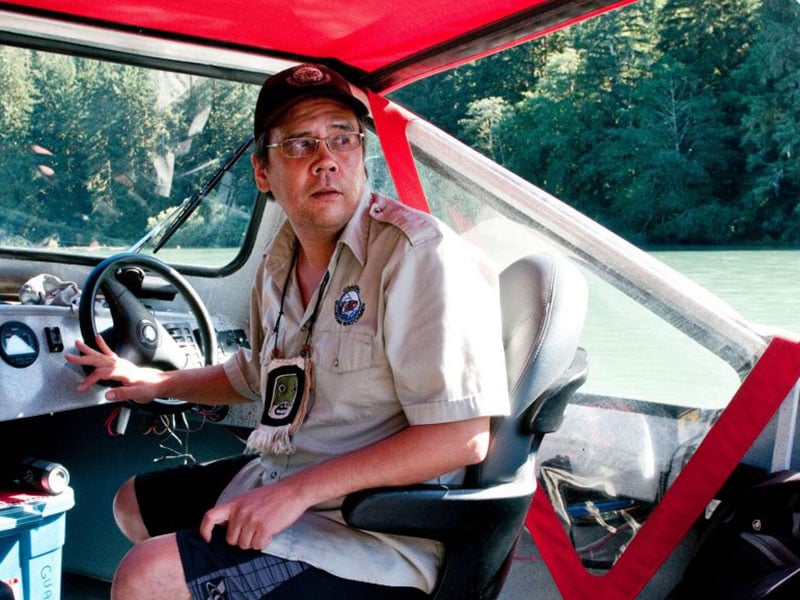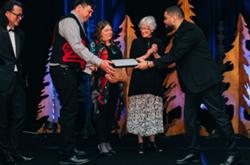The North American model of wildlife conservation originated in the United States in the 19th century and has influenced conservation efforts around the globe ever since.
One of the model’s guiding principles is to preserve wildlife as a resource for humans — an approach that resonated strongly with U.S. president Theodore Roosevelt, an avid hunter. Conservation efforts built on the model typically focus on a single species at a time and try to balance ongoing human pressure against preventing the species from going extinct.
The North American model is built on an underlying assumption — one rooted in settler culture’s tendency to overexploit resources. The model assumes that humans damage nature. Preserving land, therefore, means regulating people or fencing them out. Such decisions usually come from on high, often from national, state or provincial governments.
But not all societies exploit nature in this way. Indigenous peoples have been managing landscapes more or less sustainably for thousands of years. In fact, on the 25 per cent of lands managed or owned by Indigenous peoples worldwide, ecosystems are healthier and biodiversity is even higher than in protected conservation areas.
In recognition of that fact, negotiators at the United Nations Convention on Biological Diversity focused on Indigenous land rights as a key strategy to reverse the extinction crisis.
Indigenous peoples’ successes stem, in part, from the fact that many Indigenous worldviews recognize that species do not exist in isolation; they are part of a natural system. For the Wuikinuxv people, who live in central British Columbia, recognizing these interconnections among different species is a core value that guides their land management.
A new paper, which includes authors from the Nuxalk, Haíɫzaqv, Kitasoo/Xai’xais and Wuikinuxv nations, as well as the Hakai Institute and Raincoast Conservation Foundation, explores how conservation efforts can be decolonized. (The Hakai Institute and Hakai Magazine are both part of the Tula Foundation. The magazine is editorially independent of the institute and foundation.)
The study’s authors highlight the Wuikinuxv’s strategy for managing salmon populations as exemplifying one of the paper’s seven key principles.
When setting quotas for salmon fishing, the Wuikinuxv focus on the whole ecosystem. They ensure that there is enough salmon for local people’s food and cultural needs, but also that there is enough for bears. Commercial fisheries are a secondary concern.
Why bears? Like many First Nations in British Columbia living in grizzly bear habitats, the Wuikinuxv consider grizzlies to be close relatives, which is one reason they look out for them. But they also understand that ensuring bears get enough salmon means less human-bear conflict. It also means that there will be enough salmon for marine predators such as orcas, who take their cut before the fish swim upstream to spawn. Plus, grizzlies with enough salmon will carry the fish into the forest where their remains feed other species and, ultimately, decay and fertilize the trees.
The Wuikinuxv calculate fishing quotas based on salmon availability and existing bear density, assuming that, as salmon populations recover, the bear population will grow until it is limited by some other factor. Salmon and bear numbers are then balanced against the benefits of salmon to human fishers. Spawning targets aim to balance the costs felt by humans and bears, the latter of which encompasses the needs of other beings in the ecosystem.
In contrast, Canada manages salmon at the federal level, while bears are managed provincially, making holistic management difficult.
That disconnect points to another principle from the paper: centring place-based stewardship in local communities.
Indigenous communities’ impressive track records in managing their territories may be thanks in part to that local scale, says one of the study’s authors, William (Dúqváísḷa) Housty, a Haíɫzaqv leader in resource management. Managing large parks from a national vantage often involves making decisions based on computer models with limited data, and without “giving enough credibility to place-based learning and experience,” Housty says.
The smaller, more intimate scale of Indigenous management efforts, in contrast, allows closer observation of the landscape. “You can make sure you’re giving it enough respect and attention to do what’s right for it,” Housty says.
That leads into another of the authors’ principles: respecting all knowledge sources — not only western science — as legitimate.
The experience of one of the study’s authors, Doug (Muq’vas Glaw) Neasloss, chief councillor of the Kitasoo/Xai’xais Nation, demonstrates how local knowledge is often undervalued.
As he recounts in the paper, in the early 2000s, Neasloss reported to the B.C. provincial wildlife management agency that he and others had observed grizzly bears on islands where they hadn’t been seen before. The agency told him that he was wrong, he reports, because its models disagreed. Neasloss eventually convinced researchers at the University of Victoria to study the issue and they found and documented grizzlies on the islands. Even after that, it was years before the province updated its maps.
In a decolonized approach to conservation, the observations of people living in the area would be given proper respect, and systems would be in place to incorporate those observations into models.
More broadly, says Housty, western science’s emphasis on answering questions by eliminating variables rather than viewing a system through multiple lenses, such as the ecosystem-based approach of the Wuikinuxv, can fail to provide a true understanding of what’s needed to manage the ecosystem.
Another step toward decolonizing conservation, says Housty, is for settler governments to work with Indigenous communities as equals rather than as just one of many stakeholders. Resource stewardship should be inseparable from Indigenous sovereignty, assert the study’s authors.
Prakash Kashwan, a political scientist at the University of Connecticut who was not involved in the paper, says that although Indigenous peoples in North America have been regaining some of their voice and power over the past three decades, the study shows that many settler-led institutions remain resistant to change. Incorporating Indigenous perspectives and priorities often requires constant negotiation with state, provincial and national governments.
Yet Indigenous peoples elsewhere have it even worse, Kashwan says. “The situation has regressed very significantly in the Global South, which has witnessed violent militarization of the enforcement of exclusionary conservation.”
An example of this exclusionary approach can be found in Uganda, where the government protected mountain gorilla habitat by forcing the Batwa people off their ancestral lands and into settlements. Separated from their land and culture, the Batwa are dependent on services and prone to myriad social ills. “Global conservation groups have the leverage to introduce greater accountability in conservation, but they don’t want to offend the governments that are routinely involved in human rights violations,” says Kashwan.
Although practitioners of the North American model are now embracing community-based wildlife management — which involves engaging local people to some degree — much of it remains rather tokenistic, says Kashwan.
Based on his experience in British Columbia, Housty says governments and large institutions can decolonize their conservation policies, but it will likely take time — time that is running out.
“For too long we’ve lived under these colonial models of management,” says Housty. Given the documented superiority of stewardship on Indigenous-managed lands around the world, Housty and his colleagues argue that the place-based, values-based approach to conservation outlined in the paper should be emulated elsewhere.
It’s time to “go back to what works,” he says, “because we’re going in the wrong direction.” ![]()
Read more: Indigenous, Environment

















Tyee Commenting Guidelines
Comments that violate guidelines risk being deleted, and violations may result in a temporary or permanent user ban. Maintain the spirit of good conversation to stay in the discussion.
*Please note The Tyee is not a forum for spreading misinformation about COVID-19, denying its existence or minimizing its risk to public health.
Do:
Do not: